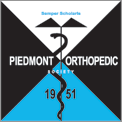History
History
by J. Leonard Goldner, M.D. ~ 2001
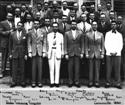 The Duke Orthopaedic and Affiliated Programs was initiated by Dr. Lenox Baker in 1945. The original sponsor of the education-research activities was the National Foundation for Infantile Paralysis (NFIP). At that time, the Salk vaccine had not yet been discovered and the Sabin oral vaccine was still in the research phase. Orthopaedic surgeons were primarily responsible for management of patients with poliomyelitis, and the effort was directed toward early management and late reconstructive surgery.
The Duke Orthopaedic and Affiliated Programs was initiated by Dr. Lenox Baker in 1945. The original sponsor of the education-research activities was the National Foundation for Infantile Paralysis (NFIP). At that time, the Salk vaccine had not yet been discovered and the Sabin oral vaccine was still in the research phase. Orthopaedic surgeons were primarily responsible for management of patients with poliomyelitis, and the effort was directed toward early management and late reconstructive surgery.
The NFIP with Basil O’Conner as the President and Franklin D. Roosevelt as the most famous supporter, was responsible for collecting and distributing funds so that all aspects of the disease could be managed in the best way possible. Research funds gathered by this organization were responsible for the pioneer work in isolating the poliomyelitis virus by John Enders and co-workers in his laboratory. Subsequently the NFIP funded Jonas Salk who developed the Salk vaccine, and Dr. Sabin who developed the oral vaccine. Grant funds were available for Resident Training and those aspects of orthopaedic surgery related to the musculoskeletal system including scoliosis. Funds were also obtained by physiatrists and physical therapists. Epidemiological studies were sponsored and the Foundation served as a central locus of all aspects of the “Dread Disease”. This designation frightened the parents and stimulated contributions.
Dr. Baker applied to the NFIP for a grant to Duke University to supplement the residents’ low income and to provide for clinical and laboratory research. These funds helped the residents travel from one location to another as they were assigned to areas where polio epidemics were occurring. Also, they received segments of their training from affiliated programs that included Shriner’s Hospital in Greenville, South Carolina where Warren White was Chief Surgeon; Charlotte Memorial Hospital in Charlotte, North Carolina where Oscar Miller was Chief; North Carolina Orthopaedic Hospital in Gastonia, North Carolina where William Roberts was Chief Surgeon; Georgia Warm Springs Foundation in Warm Springs, Georgia where Ed Irwin was Chief; Watts Hospital in Durham, North Carolina where Everett Bugg was Chief; Armed Forces Institute of Pathology in Washington, D.C. where Lent Johnson was Chief Pathologist; and the A.I. Dupont Institute where Al Shands was Chief Surgeon. These affiliated areas and the Basic Science Departments at Duke – Anatomy with Joe Markee; Pathology with Wiley Forbus; Physiology; Biochemistry with Philip Handler, and Physical Therapy directed by Helen Kaiser cooperated in training orthopaedic residents.
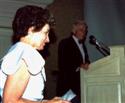 My first assignment at Duke in 1946 was to initiate the Correspondence Letter that was prepared annually by each resident and sent out to the residents in training and other interested individuals every month. I initiated the schedule, prepared the format, and reminded the residents when their papers were due. I have been doing this ever since.
My first assignment at Duke in 1946 was to initiate the Correspondence Letter that was prepared annually by each resident and sent out to the residents in training and other interested individuals every month. I initiated the schedule, prepared the format, and reminded the residents when their papers were due. I have been doing this ever since.
 In 1950, when I completed my formal orthopaedic training at Duke and I joined the staff which consisted of Lenox Baker as Chief, Bev Raney as half time, and me. It was apparent to me that as residents left the Training Program, contributions to the program would be less and less if a cohesive organization was not formed. Accordingly, in 1951, I sought the support of Walter A. Hoyt, Jr. of Akron, Jack Hughston of Columbus, Georgia, and Ned Shutkin of New Haven, Connecticut in order to form the Piedmont Orthopedic Society . We selected the name because of the geographic region and the fact that Duke was at the base of the mountains. Don Eyler of Nashville, Tennessee had spent a year at Duke in the Anatomy Department and he offered to complete the incorporation mechanism in that state. The corporate seal was issued by Tennessee for the Piedmont Orthopedic Society.
In 1950, when I completed my formal orthopaedic training at Duke and I joined the staff which consisted of Lenox Baker as Chief, Bev Raney as half time, and me. It was apparent to me that as residents left the Training Program, contributions to the program would be less and less if a cohesive organization was not formed. Accordingly, in 1951, I sought the support of Walter A. Hoyt, Jr. of Akron, Jack Hughston of Columbus, Georgia, and Ned Shutkin of New Haven, Connecticut in order to form the Piedmont Orthopedic Society . We selected the name because of the geographic region and the fact that Duke was at the base of the mountains. Don Eyler of Nashville, Tennessee had spent a year at Duke in the Anatomy Department and he offered to complete the incorporation mechanism in that state. The corporate seal was issued by Tennessee for the Piedmont Orthopedic Society.
Sam Stubbins of Cleveland, Ohio, who spent a year on the Duke program at the Greenville Shriner’s Hospital with Warren White, designed an emblem and logo for the Society. Our current famous herald, with the serpent of Aesculapius and the Semper Scholarte, was the result of his geometric design.
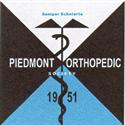 The symbol of the Piedmont Orthopedic Society has been on all the annual programs, the address book, the Piedmont tiles, and the current stationary. The emblem is more obvious than the Correspondence Letters which are relatively far and few between and which do arrive at irregular intervals. The initial mailing list of 300 was made up of residents, faculty, and other persons interested in poliomyelitis, orthopaedic training programs, and the various activities of Duke residents. The current list has about 500 names on it and goes only to the members of the Piedmont Orthopedic Society-Foundation.
The symbol of the Piedmont Orthopedic Society has been on all the annual programs, the address book, the Piedmont tiles, and the current stationary. The emblem is more obvious than the Correspondence Letters which are relatively far and few between and which do arrive at irregular intervals. The initial mailing list of 300 was made up of residents, faculty, and other persons interested in poliomyelitis, orthopaedic training programs, and the various activities of Duke residents. The current list has about 500 names on it and goes only to the members of the Piedmont Orthopedic Society-Foundation.
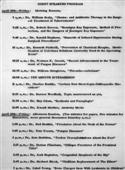 The first meeting of the Piedmont Orthopedic Society was held at Durham, North Carolina in 1953 where I was the Chairman. The Scientific Program, the afternoon informal conferences, and the social events attracted 30 members and their wives with a total of 54 people. The meeting was a great success. The subsequent meetings are listed in the current Piedmont Directory.
The first meeting of the Piedmont Orthopedic Society was held at Durham, North Carolina in 1953 where I was the Chairman. The Scientific Program, the afternoon informal conferences, and the social events attracted 30 members and their wives with a total of 54 people. The meeting was a great success. The subsequent meetings are listed in the current Piedmont Directory.
The Piedmont Orthopedic Foundation, a separate entity from the Piedmont Orthopedic Society, was incorporated in North Carolina by F. Wayne Lee of Charlotte in 1954. The original officers of the Foundation were President Leslie C. Meyer, Vice President J. Leonard Goldner, and Secretary-Treasurer F. Wayne Lee, M.D. Also, at that same meeting, I was appointed Executive Secretary of the Society, an office that was eventually included in the By-Laws. The purpose of forming the Foundation was to provide a way that the alumni of the Duke Program could contribute annually so that the funds could be used for research projects for the Duke residents and controlled entirely by the members as an autonomous Foundation.
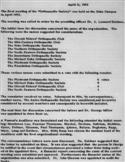 The officers of the Foundation remained in place for several years, but the officers of the Society changed annually with a new Chairman, the same Executive Secretary, and rotating Members-at-Large. The Society members during the period from 1951 through 1967 depended on the four graduating residents each year. Structured Fellowships began in 1969, and the Fellows were also eligible for membership.
The officers of the Foundation remained in place for several years, but the officers of the Society changed annually with a new Chairman, the same Executive Secretary, and rotating Members-at-Large. The Society members during the period from 1951 through 1967 depended on the four graduating residents each year. Structured Fellowships began in 1969, and the Fellows were also eligible for membership.
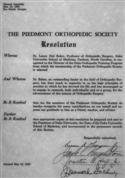 In 1967, when Dr. Baker retired, I became Chief and with the approval of the Residency Review Committee, increased the number of residents appointed to the Duke Program to eight each year. Thus, the size of the membership increased rapidly, and by 1975 two Chairmen were appointed for each annual Piedmont meeting so that many members would have an opportunity to be hosts. There has been an annual meeting each year since 1953. The Society has met at Sea Island, Georgia during alternate years and a location designated by the membership during the other years.
In 1967, when Dr. Baker retired, I became Chief and with the approval of the Residency Review Committee, increased the number of residents appointed to the Duke Program to eight each year. Thus, the size of the membership increased rapidly, and by 1975 two Chairmen were appointed for each annual Piedmont meeting so that many members would have an opportunity to be hosts. There has been an annual meeting each year since 1953. The Society has met at Sea Island, Georgia during alternate years and a location designated by the membership during the other years.
In 1963, the first formal research grant was awarded from the Foundation to Don Ferlic a Duke resident. His study was on sutureless nerve repair using Cyanoacrylate. Although this method was too exothermic for nerve union, he observed that high temperature prevented neuromas from occurring even though union did not occur.
Through 1999, approximately 90 grants have been awarded from the Foundation to Duke residents. The Foundation Endowment has grown to approximately $700,000.00. The policy of awarding 80% of the annual earned income for grants and returning 20% to the Corpus, in addition to annual contributions by the members, has resulted in a significant growth of the Endowment so that the grant awards are assured in perpetuity.
The major goals of the Society were to maintain a cohesive group of alumni who communicated at regular intervals and who maintained not only the Duke Orthopaedic group spirit, but also individual friendships. The purpose of the Foundation was to encourage research projects, both clinical and laboratory, by Duke residents and to allow resident participation in educational endeavors. These efforts were formulated to benefit orthopaedics in general and particularly those in the Piedmont Orthopedic Society and all of the members’ patients.
Currently, the membership is made up of 443 members that include active, inactive, honorary, and corresponding members. Unfortunately, the list of deceased members has enlarged slowly and 48 former members have died.
Recently, Frank Bassett was instrumental in initiating a project that assisted both the Orthopaedic Research Education Foundation (OREF) and the Foundation of the contributor’s choice. The contributor will receive the Order of Merit from the OREF and a letter of thanks, and a Piedmont tile from the Piedmont Orthopedic Foundation. The donor receives a signal honor from the OREF and at the same time participates in the growth and development of the Piedmont Orthopedic Foundation. The current officers of the Piedmont Orthopedic Society are: the Co-Chairmen of the upcoming meeting in May of 2000 in Sea Island, Georgia Bill Hardaker and Ollie Edmunds; the Co-Executive Secretaries are J. Leonard Goldner and James R. Urbaniak; Historian Bill Richardson; Scientific Committee David Urquia; and the Members-at-Large are Tad Vail, Erich Wouters, and Tom Spangler.
The officers of the Piedmont Orthopedic Foundation are: Chairman Glen Barden, Vice Chairman Ken Wood, Secretary/Treasurer Tom Loeb, Co-Secretary/Treasurer Guy Rutledge. The Grant Review Committee includes Dean Sotereanos, Andrew Caputo, and Howard Tiller.
The outstanding annual meetings are planned by the Chairmen and the Executive Secretary as soon as the current meeting is completed. The meeting locations have been selected at least five years in advance, and the site is determined by the members in order to attract as many members as possible.
 The average attendance at the annual Spring meeting has been about 60 members (120 persons) and the average attendance at the Mid-Winter meetings has been about 150 members and guests.
The average attendance at the annual Spring meeting has been about 60 members (120 persons) and the average attendance at the Mid-Winter meetings has been about 150 members and guests.
 The annual Spring meeting was planned to include a Scientific Program of a high caliber, and social activities that are of interest to everyone. Although classmates may meet for breakfast and lunch, all of the social and professional activities include the entire group. The personal associations are friendly and the age gap shortens quickly.
The annual Spring meeting was planned to include a Scientific Program of a high caliber, and social activities that are of interest to everyone. Although classmates may meet for breakfast and lunch, all of the social and professional activities include the entire group. The personal associations are friendly and the age gap shortens quickly.
Certain activities and awards are well established and occur annually
 1. The Piedmont Pitcher – initially, this quiz program was planned to present 20 unknown orthopaedic pathology problems in the form of x-rays and a brief history. The members were allowed to browse through the x-rays set up on viewboxes for as long as they wished during a two day period. The answers were then graded by the originator of the quiz and the winner was announced at the Saturday night banquet. Since 1953, there has been a Piedmont pitcher winner each year. The original pitcher has 38 names on it and was retired in 1979. The current pitcher has 21 names on it and the last winners were Jim Urbaniak and Bob Fitch. During the past several years, the format of the quiz has been changed to 35 mm. slides with each slide being shown for 20 seconds and the members of the audience write their answers during a simultaneous showing. These quizzes have been a radiologist’s dream.
1. The Piedmont Pitcher – initially, this quiz program was planned to present 20 unknown orthopaedic pathology problems in the form of x-rays and a brief history. The members were allowed to browse through the x-rays set up on viewboxes for as long as they wished during a two day period. The answers were then graded by the originator of the quiz and the winner was announced at the Saturday night banquet. Since 1953, there has been a Piedmont pitcher winner each year. The original pitcher has 38 names on it and was retired in 1979. The current pitcher has 21 names on it and the last winners were Jim Urbaniak and Bob Fitch. During the past several years, the format of the quiz has been changed to 35 mm. slides with each slide being shown for 20 seconds and the members of the audience write their answers during a simultaneous showing. These quizzes have been a radiologist’s dream.
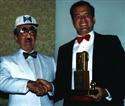 2. The Kelley Award – this award has been presented annually since 1960. Jim Kelley of Rome, Georgia attended his first meeting in 1960. He presented a paper on Hip Fractures and his slides were of poor quality, either too dark or too light for visible projection. In spite of this, he acted just like Ronald Reagan as he presented the material and he smiled during the entire presentation; he talked as if there were no problems whatsoever, and he thanked his audience for their kind attention while they responded in an hilarious way. To reward him for this entertainment, his good humor, and his poor slides, he was given the “Kelley award” at the banquet. Jim never returned to another meeting – he says his feelings were not hurt, but the date of the meeting did not fit in with the children’s school schedules and other personal activities. Recently, however, he informed me that he will attempt to return to the next meeting in Sea Island, 37 years later. The Kelley award has been given annually for the “worst audiovisual presentation”. Otto Stewart and Glen
2. The Kelley Award – this award has been presented annually since 1960. Jim Kelley of Rome, Georgia attended his first meeting in 1960. He presented a paper on Hip Fractures and his slides were of poor quality, either too dark or too light for visible projection. In spite of this, he acted just like Ronald Reagan as he presented the material and he smiled during the entire presentation; he talked as if there were no problems whatsoever, and he thanked his audience for their kind attention while they responded in an hilarious way. To reward him for this entertainment, his good humor, and his poor slides, he was given the “Kelley award” at the banquet. Jim never returned to another meeting – he says his feelings were not hurt, but the date of the meeting did not fit in with the children’s school schedules and other personal activities. Recently, however, he informed me that he will attempt to return to the next meeting in Sea Island, 37 years later. The Kelley award has been given annually for the “worst audiovisual presentation”. Otto Stewart and Glen  Musselman, who completed their training in 1961 and 1962, were asked to present the Kelley award in an original way. They have done this at almost every meeting since 1963 at which time they had an “impromptu” skit that reminded me of Laurel and Hardy. Their originality has been unmatched even by Howard Aidem and Bill Goodman who substituted on one occasion.
Musselman, who completed their training in 1961 and 1962, were asked to present the Kelley award in an original way. They have done this at almost every meeting since 1963 at which time they had an “impromptu” skit that reminded me of Laurel and Hardy. Their originality has been unmatched even by Howard Aidem and Bill Goodman who substituted on one occasion.
3. The Loving Cup – this was initiated by Ken Goldner several years ago. This award was given to a pregnant wife who attended the meeting. On more than one occasion, two awards were given – not for twins but for two different lucky individuals.
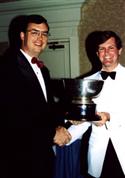 4. The Golf Awards – prizes were given for low gross, low net (biggest liar about handicap), and usually a prize was given for the person who was closest to the pin on the first shot on a short hole. For several years, the Piedmont Cup was usually taken home by John Powers of Charlotte, occasionally Paul Thompson, Kearns Thompson, and more recently Todd Chapman, and Erich Wouters. If I have overlooked anyone who won the award, I apologize. The closest that I got to the award was when Bill Rowland hit me in the left thigh when he drove off of number one tee when I was approximately 220 yards down the fairway.
4. The Golf Awards – prizes were given for low gross, low net (biggest liar about handicap), and usually a prize was given for the person who was closest to the pin on the first shot on a short hole. For several years, the Piedmont Cup was usually taken home by John Powers of Charlotte, occasionally Paul Thompson, Kearns Thompson, and more recently Todd Chapman, and Erich Wouters. If I have overlooked anyone who won the award, I apologize. The closest that I got to the award was when Bill Rowland hit me in the left thigh when he drove off of number one tee when I was approximately 220 yards down the fairway.
The most unusual event on the golf course occurred at Sea Island about 1970 when, about 20 yards off the third tee, I saw something glistening in the grass. I picked up a wedding band that turned out to belong to Wayne Lee who had dropped it as he pulled something from his pocket after walking off the tee. Literally, a “needle in a haystack”. He claims that I “saved his marriage”.
5. The Tennis Awards – these included men’s singles, women’s singles, and mixed doubles. The tennis competition has been highly competitive with Carol Adelaar, Julie Pohlman, Betsy Goodman, and Evelyn Coonrad as frequent winners for the “old timers”. More recently, Laura Spangler and Sharon Ferlic have shown their skills.
The men winners have been Bill Goodman, Barry Heywood, and more recently Billy Andrews, Tom Spangler, and Mike Romash.
My most memorable tennis event was the afternoon that Paul Thompson and Basil Boyd challenged me to a match where both of them would play me alone with the winners being judged on the best of seven games. I managed to win by having them collide with each other on several occasions. The laughter of the audience was so diverting that they could not pay attention to the bouncing ball.
6. The Chairmen’s Award for the best audiovisual presentation – Rob Stein and Ken Wood initiated this award when they were Chairmen. Jim Urbaniak was the initial winner when he presented a videotape of the research material from the Duke Research Laboratories that won a Kappa Delta Award. The winner a year later was Bill Richardson who gave an unusual presentation with three dimensional visual display of his orthopaedic topic.
Originally the administrative details and the historical memorabilia were kept by me until Charles Taft was designated as Historian. He and Lamar looked after the photographs and other vital material for several years. They arranged an album, collected slides and prints, and were instrumental in maintaining a running account of each annual meeting. Billy and Peggy Andrews took on the task and collected photos of each annual meeting. This year Bill Richardson was asked to be Historian. Secretary Penny Howard and her husband Larry under the direction of Bill Richardson have added photographs to the Piedmont web site. Review this and retrieve recent and old photographs from the annual meetings. Review your old photographs and send them to this office for addition to this site.
During the 1995 Mid-Winter meeting Dick and Becky Straley and Bill and Jackie Moorefield were hosts. There was a large attendance of members from many different years of training. Several of our former Fellows from Greece attended, and Taki Soucacos brought King Constantine, the former Greek monarch for a personal visit. I recall being in Greece with Ken and our sons in 1967 at the Hotel Grand Britannia while just two blocks away we watched an Army coup depose the King and his followers.
